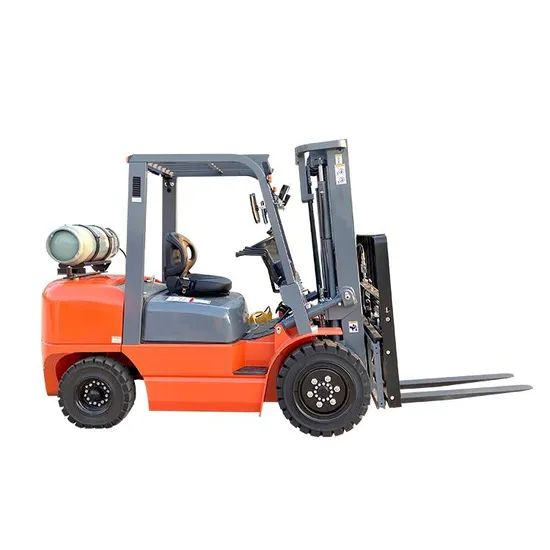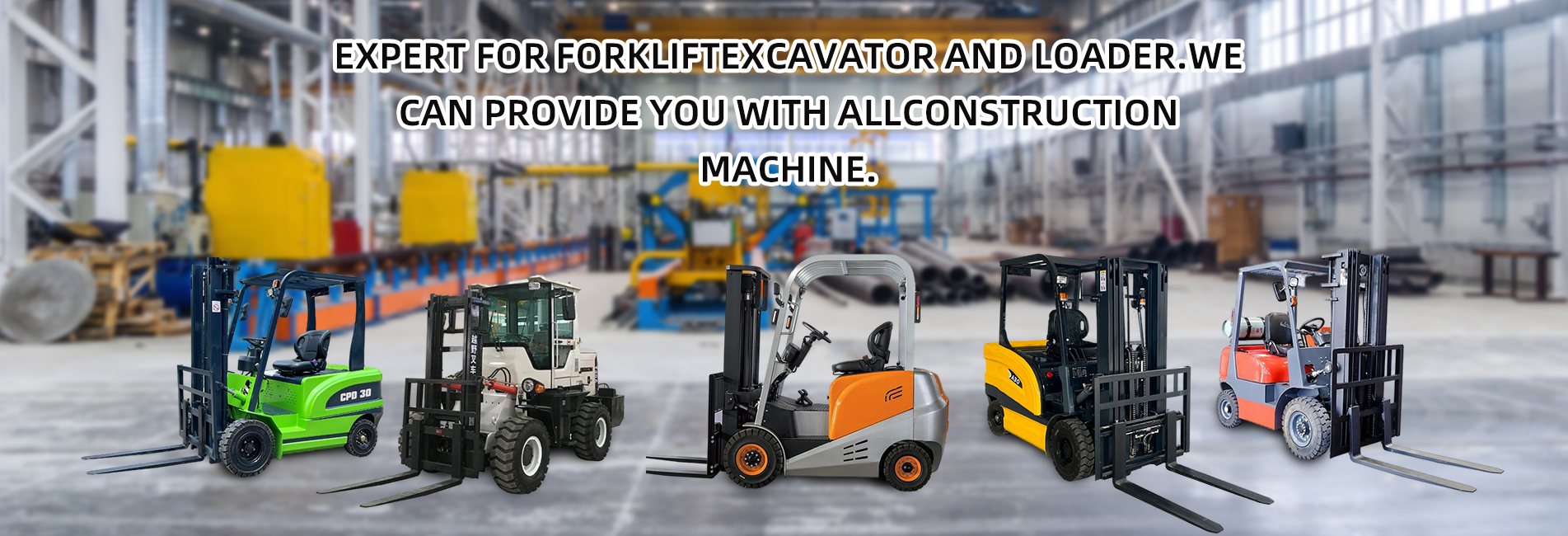In the field of industrial handling, fuel-powered forklifts and LPG (liquefied petroleum gas) forklifts are two common types of equipment, each with its own characteristics and suitable for different scenarios. The following is a detailed comparison between the two from multiple aspects:

Power Source and Refueling
Fuel-powered forklifts usually use diesel as fuel. Refueling is relatively convenient, which can be quickly completed where diesel is available. Moreover, diesel storage is also convenient without the need for special storage equipment, making it suitable for some field operations or factories with sufficient diesel supply.
LPG forklifts use liquefied petroleum gas as fuel and require special gas cylinders for storage. Refueling requires replacing gas cylinders or using special refueling equipment, and the steps are relatively more. However, LPG cylinders can be supplied and replaced centrally, which can reduce the risk of fuel leakage in indoor places with higher environmental requirements.
Performance
In terms of power performance, fuel-powered forklifts, especially diesel forklifts, have large torque and strong power, performing well under heavy load conditions. They are suitable for use in scenarios such as rough roads or frequent heavy lifting, such as construction sites and mines. Their engines also have strong durability and can adapt to relatively harsh working environments.
Although the power performance of LPG forklifts is slightly inferior to that of diesel forklifts, they operate more stably with less vibration and noise. In no-load and light-load conditions, they have high operational flexibility, with relatively smooth acceleration and deceleration, making them more suitable for use in indoor warehouses, workshops and other places with certain requirements for noise and vibration.
Usage Cost
The initial purchase cost of fuel-powered forklifts is relatively low. The price of diesel fluctuates in different regions and periods, but generally speaking, the cost of obtaining diesel is relatively stable. However, diesel forklifts have relatively high fuel consumption, and the maintenance cost of the engine is also not low. Especially after long-term use, the replacement frequency of wearing parts will increase.
The initial purchase cost of LPG forklifts is higher than that of fuel-powered forklifts because they need to be equipped with a special fuel system and gas cylinders. However, the price of LPG is relatively stable, and it has high combustion efficiency and low fuel consumption. In the long run, the fuel cost may be more advantageous. In addition, the engine wear of LPG forklifts is small, the maintenance cycle is longer, and the maintenance cost is relatively low.
Environmental Protection and Safety
In terms of environmental protection, the exhaust gas emitted by fuel-powered forklifts contains many harmful substances, such as carbon monoxide, nitrogen oxides, and particulate matter, which cause great pollution to the environment. They are not suitable for places with high environmental protection requirements and may be restricted in use in some areas with strict emission restrictions.
LPG forklifts burn relatively fully, emit fewer harmful substances, and cause much less exhaust pollution than fuel-powered forklifts, making them more environmentally friendly. They can meet the environmental protection standards for indoor operations and conform to the current trend of green development.
In terms of safety, the fuel of fuel-powered forklifts is diesel, which is flammable, but diesel has a high ignition point, so the fire risk is relatively low. However, diesel leakage can easily cause environmental pollution. LPG is a flammable and explosive gas. The stored gas cylinders may explode or leak if affected by impact, high temperature, etc. Therefore, safety regulations must be strictly followed during use and storage, and the tightness and safety of gas cylinders must be checked regularly.
Applicable Scenarios
Fuel-powered forklifts are suitable for outdoor, heavy-load scenarios with low environmental protection requirements, such as construction sites, mines, ports and other places, and can adapt to harsh working environments and high-intensity operation needs.
LPG forklifts are more suitable for indoor, light-load or medium-load scenarios with requirements for environmental protection and noise, such as food processing plants, pharmaceutical warehouses, electronic workshops, etc. They can not only ensure operation efficiency but also reduce the impact on the environment and operators.
To sum up, fuel-powered forklifts and LPG forklifts have their own advantages and disadvantages. Enterprises should comprehensively consider factors such as their own operating environment, load requirements, environmental protection requirements and cost budgets when making a choice, and select the most suitable type of forklift for themselves.


